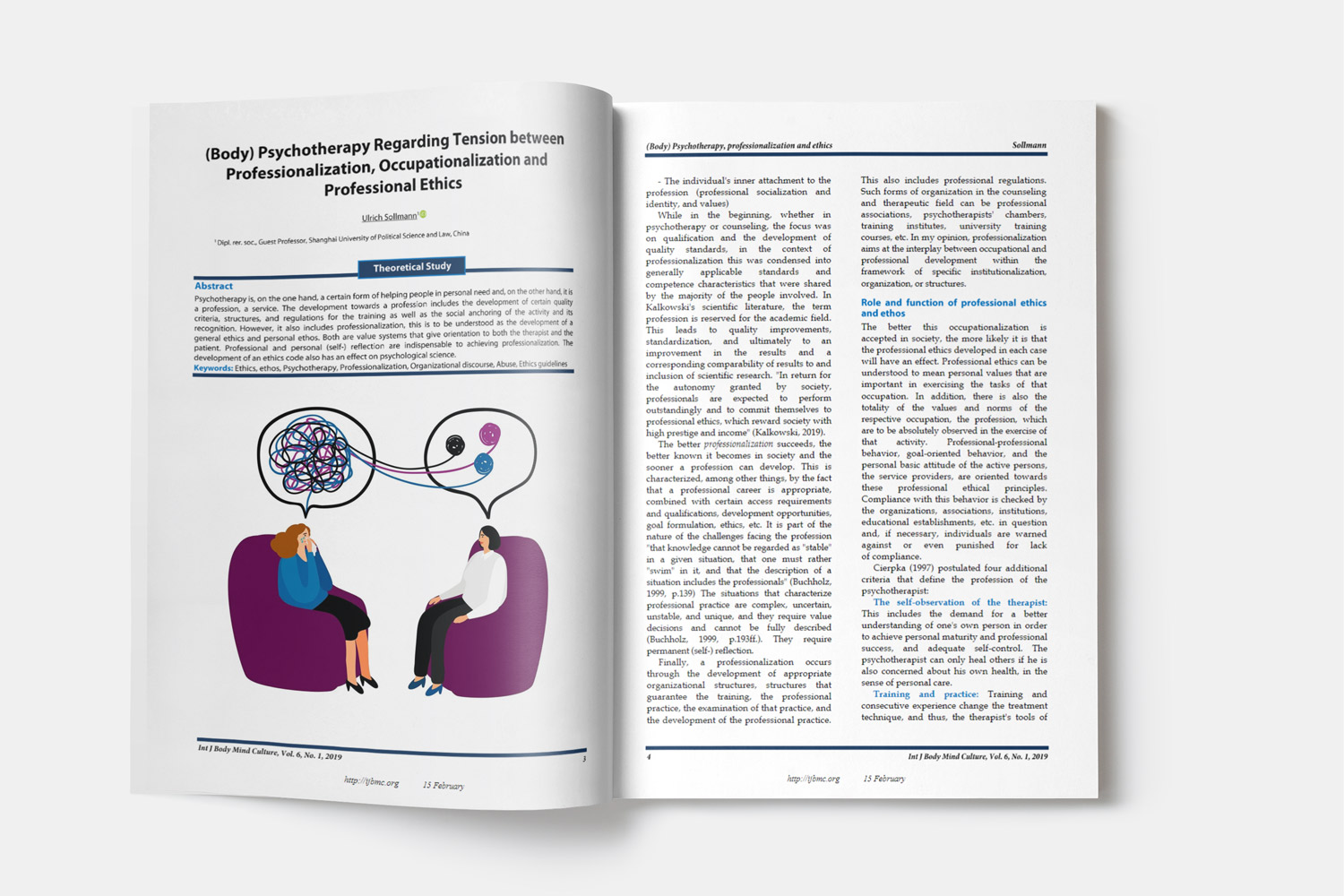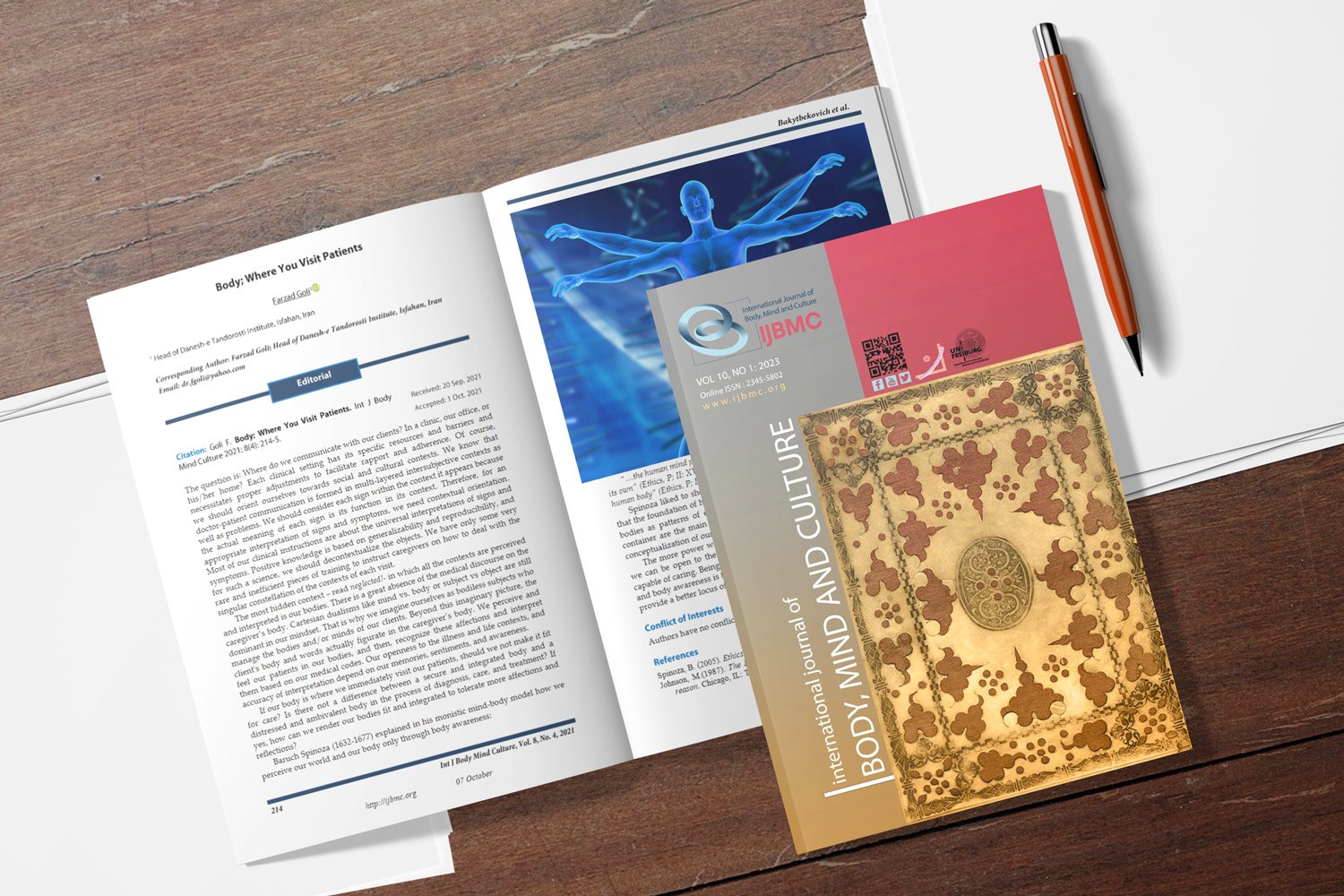A Comparative Study of the Effectiveness of Acceptance and Commitment Therapy and Transcranial Direct Current Stimulation on Anxiety, Depression, and Physical Symptoms of Individuals Suffering from Chronic Pain
Downloads
Background: The present research was conducted to compare the effectiveness of acceptance and commitment therapy (ACT) and transcranial direct current stimulation (tDCS) on anxiety, depression, and physical symptoms.
Methods: This research falls among semi-probationary plans, with a pretest-posttest design, two groups, and follow-up. The research statistical population included all male and female out-patients who referred to any treatment centers in Tehran, Iran, in the years 2019-2020 with a chronic pain complaint and received a definitive diagnosis of chronic pain by neurologists and rheumatologists. In order to establish 3 groups using targeted sampling method (considering the inclusion and exclusion criteria), 30 patients were initially selected, and then, 15 patients were placed in the first experimental group and 15 patients in the second experimental group randomly. The research tools consisted of the Beck Depression Inventory (BDI) (1961), Beck Anxiety Inventory (BAI) (1990), and Mcgill Pain Questionnaire (MPQ) (2007). Research data were analyzed using repeated measures ANOVA.
Results: The result of data analysis indicated that ACT and tDCS lead to a decrease in depression, anxiety, and physical symptoms. In addition, compared to tDCS, ACT had a more significant effect on reducing anxiety in individuals suffering from chronic pain (P < 0.05).
Conclusion: Both ACT and tDCS had a significant effect on improving depression, anxiety, and physical symptoms in people with chronic pain. ACT was also more effective in reducing anxiety. However, there was no significant difference between ACT and tDCS in influencing depression and physical symptoms.
Downloads
Akbari, F. (2015). The effectiveness of transcranial Direct Current Stimulation of the brain (tDCS) on reducing depressive symptoms among people with Depressive Disorder. International Journal of Behavioral Sciences, 9(1), 95-101.
Arkan, A., & Yaryari, F. (2014). Effect of transcranial direct current stimulation (TDCS) on working memory in healthy people. Journal of Cognitive Psychology, 2(2), 10-17.
Boroumand, A. , Asghari Moghaddam, M. A., Shaeeri, M. R., & Mesgarian, F. (2012). Chronic pain, pain self-efficacy and suicidal ideation: the moderating role of pain self-efficacy on relation between depression and suicidal ideation in chronic pain patients. J Fundam Ment Health, 14(2), 152-163.
Brooks, H., Oughli, H. A., Kamel, L., Subramanian, S., Morgan, G., Blumberger, D. M. et al. (2021). Enhancing cognition in older persons with depression or anxiety with a combination of mindfulness-based stress reduction (MBSR) and transcranial direct current stimulation (tDCS): Results of a pilot randomized clinical trial. Mindfulness.(N.Y.), 1-13. doi:10.1007/s12671-021-01764-9 [doi];1764 [pii]. Retrieved from PM:34630733
Darvish Baseri, L., & DashtBozorgi, Z. (2017). Effectiveness of group therapy based on acceptance and commitment on cognitive emotion regulation and alexithymia of patients with type 2 diabetes. Iranian Journal of Psychiatric Nursing, 5(1), 7-14.
Dowell, D., Haegerich, T. M., & Chou, R. (2016). CDC guideline for prescribing opioids for chronic pain--united states, 2016. JAMA., 315(15), 1624-1645. doi:2503508 [pii];10.1001/jama.2016.1464 [doi]. Retrieved from PM:26977696
Dworkin, R. H., Turk, D. C., Revicki, D. A., Harding, G., Coyne, K. S., Peirce-Sandner, S. et al. (2009). Development and initial validation of an expanded and revised version of the Short-form McGill Pain Questionnaire (SF-MPQ-2). Pain., 144(1-2), 35-42. doi:S0304-3959(09)00125-0 [pii];10.1016/j.pain.2009.02.007 [doi]. Retrieved from PM:19356853
Fisher, E., Heathcote, L. C., Eccleston, C., Simons, L. E., & Palermo, T. M. (2018). Assessment of pain anxiety, pain catastrophizing, and fear of pain in children and adolescents with chronic pain: A systematic review and meta-analysis. J Pediatr.Psychol, 43(3), 314-325. doi:4034672 [pii];10.1093/jpepsy/jsx103 [doi]. Retrieved from PM:29049813
Hayes, S. C., Strosahl, K. D., Wilson, K. G., & Lillis, J. (2010). All Rivers Lead to the Ocean.
Hughes, L. S., Clark, J., Colclough, J. A., Dale, E., & McMillan, D. (2017). Acceptance and commitment therapy (ACT) for chronic pain: A systematic review and meta-analyses. Clin J Pain., 33(6), 552-568. doi:10.1097/AJP.0000000000000425 [doi]. Retrieved from PM:27479642
Kaviani H., & Mousavi, A. S. (2008). Psychometric properties of the Persian version of Beck Anxiety Inventory (BAI). Tehran-Univ-Med-J, 66(2), 136-140.
Kuner, R., & Flor, H. (2016). Structural plasticity and reorganisation in chronic pain. Nat.Rev.Neurosci, 18(1), 20-30. doi:nrn.2016.162 [pii];10.1038/nrn.2016.162 [doi]. Retrieved from PM:27974843
Lerman, S. F., Rudich, Z., Brill, S., Shalev, H., & Shahar, G. (2015). Longitudinal associations between depression, anxiety, pain, and pain-related disability in chronic pain patients. Psychosom.Med, 77(3), 333-341. doi:10.1097/PSY.0000000000000158 [doi]. Retrieved from PM:25849129
Livheim, F., Hayes, L., Ghaderi, A., Magnusdottir, T., Hogfeldt, A., Rowse, J. et al. (2015). The effectiveness of Acceptance and commitment therapy for adolescent mental health: Swedish and Australian pilot outcomes. J Child Fam Stud, 24(4), 1016-1030.
Nazari, A., Ahmadian, A., & Afshar, A. (2014). Diagnostic Clinical Features of Syndrome Dimensions of Psychological Trauma Resulting from Spouse Infidelity: A Qualitative Case Study. Journal of Policing and Social Studies of Women and Family, 1393(2), 71-84. Retrieved from http://pssw.jrl.police.ir/article_17571.html
O'Connell, N. E., Marston, L., Spencer, S., DeSouza, L. H., & Wand, B. M. (2018). Non-invasive brain stimulation techniques for chronic pain. Cochrane.Database.Syst.Rev., 4, CD008208. doi:10.1002/14651858.CD008208.pub5 [doi]. Retrieved from PM:29652088
Reiner, I., Bakermans-Kranenburg, M. J., Van IJzendoorn, M. H., Fremmer-Bombik, E., & Beutel, M. (2016). Adult attachment representation moderates psychotherapy treatment efficacy in clinically depressed inpatients. J Affect.Disord, 195, 163-171. doi:S0165-0327(15)30976-9 [pii];10.1016/j.jad.2016.02.024 [doi]. Retrieved from PM:26896809
Sadock, B. J., Sadock, V. A., & Kaplan, H. I. (2009). Kaplan and Sadock's Concise Textbook of Child and Adolescent Psychiatry. LWW medical book collection. Philadelphia, PA: Lippincott Williams and Wilkins Retrieved from https://books.google.com/books?id=DUFZ9NP2GK0C.
Stefan-Dabson, K., Mohammadkhani, P., & Massah-Choulabi, O. (2007). Psychometrics Characteristic of Beck Depression Inventory-II in Patients with Magor Depressive Disorder. Rehabilitation, 8, 80-86. Retrieved from http://rehabilitationj.uswr.ac.ir/article-1-135-en.html
Thompson, D. P., Antcliff, D., & Woby, S. R. (2018). Symptoms of chronic fatigue syndrome/myalgic encephalopathy are not determined by activity pacing when measured by the chronic pain coping inventory. Physiotherapy., 104(1), 129-135. doi:S0031-9406(17)30077-9 [pii];10.1016/j.physio.2017.07.005 [doi]. Retrieved from PM:28843450
Trompetter, H. R., Bohlmeijer, E. T., Veehof, M. M., & Schreurs, K. M. (2015). Internet-based guided self-help intervention for chronic pain based on acceptance and commitment therapy: A randomized controlled trial. J Behav Med, 38(1), 66-80. doi:10.1007/s10865-014-9579-0 [doi]. Retrieved from PM:24923259
Vowles, K. E., & Thompson, M. (2011). Acceptance and commitment therapy for chronic pain. In L. M. McCraken (Eds). Mindfulness and acceptance in behavioral medicine: Current theory and practice (pp. 31-60). Oakland, CA, US: New Harbinger Publications, Inc.
Wang, Z., Zhu, R., Rehman, A. U., & You, X. (2020). Dorsolateral prefrontal cortex and task-switching performance: Effects of anodal transcranial direct current stimulation. Neuroscience, 446, 94-101. doi:S0306-4522(20)30539-X [pii];10.1016/j.neuroscience.2020.08.020 [doi]. Retrieved from PM:32858145
Washburn, M., Yu, M., Rubin, A., & Zhou, S. (2021). Web-based acceptance and commitment therapy (ACT) for symptoms of anxiety and depression: Within-group effect size benchmarks as tools for clinical practice. J Telemed.Telecare., 27(5), 314-322. doi:10.1177/1357633X211009647 [doi]. Retrieved from PM:33966524
Copyright (c) 2022 International Journal of Body, Mind and Culture

This work is licensed under a Creative Commons Attribution-NonCommercial 4.0 International License.















